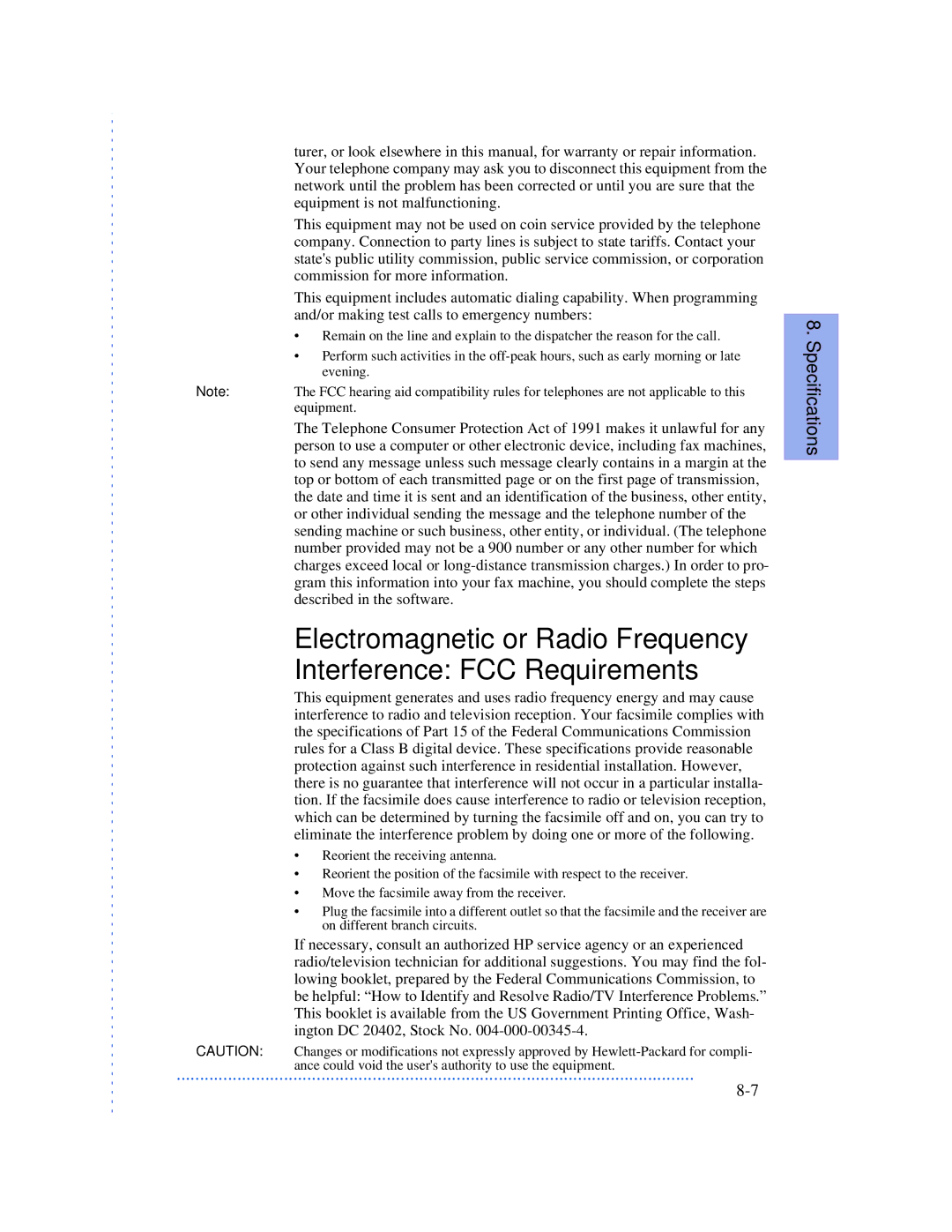
turer, or look elsewhere in this manual, for warranty or repair information. Your telephone company may ask you to disconnect this equipment from the network until the problem has been corrected or until you are sure that the equipment is not malfunctioning.
This equipment may not be used on coin service provided by the telephone company. Connection to party lines is subject to state tariffs. Contact your state's public utility commission, public service commission, or corporation commission for more information.
This equipment includes automatic dialing capability. When programming and/or making test calls to emergency numbers:
•Remain on the line and explain to the dispatcher the reason for the call.
•Perform such activities in the
Note:The FCC hearing aid compatibility rules for telephones are not applicable to this equipment.
The Telephone Consumer Protection Act of 1991 makes it unlawful for any person to use a computer or other electronic device, including fax machines, to send any message unless such message clearly contains in a margin at the top or bottom of each transmitted page or on the first page of transmission, the date and time it is sent and an identification of the business, other entity, or other individual sending the message and the telephone number of the sending machine or such business, other entity, or individual. (The telephone number provided may not be a 900 number or any other number for which charges exceed local or
Electromagnetic or Radio Frequency
Interference: FCC Requirements
This equipment generates and uses radio frequency energy and may cause interference to radio and television reception. Your facsimile complies with the specifications of Part 15 of the Federal Communications Commission rules for a Class B digital device. These specifications provide reasonable protection against such interference in residential installation. However, there is no guarantee that interference will not occur in a particular installa- tion. If the facsimile does cause interference to radio or television reception, which can be determined by turning the facsimile off and on, you can try to eliminate the interference problem by doing one or more of the following.
•Reorient the receiving antenna.
•Reorient the position of the facsimile with respect to the receiver.
•Move the facsimile away from the receiver.
•Plug the facsimile into a different outlet so that the facsimile and the receiver are on different branch circuits.
If necessary, consult an authorized HP service agency or an experienced radio/television technician for additional suggestions. You may find the fol- lowing booklet, prepared by the Federal Communications Commission, to be helpful: “How to Identify and Resolve Radio/TV Interference Problems.” This booklet is available from the US Government Printing Office, Wash- ington DC 20402, Stock No.
CAUTION: Changes or modifications not expressly approved by
ance could void the user's authority to use the equipment.
...............................................................................................................
